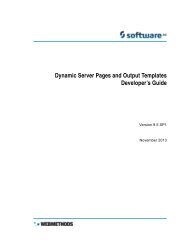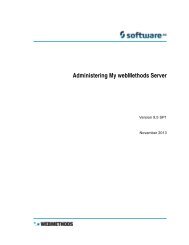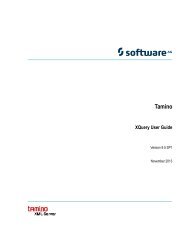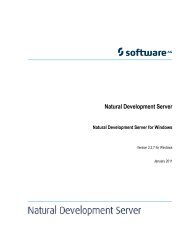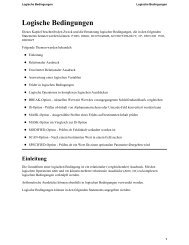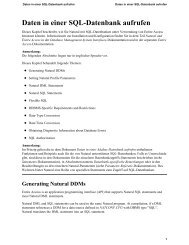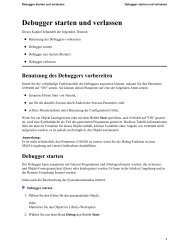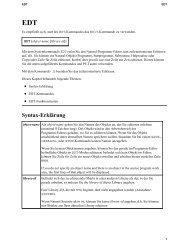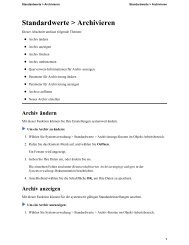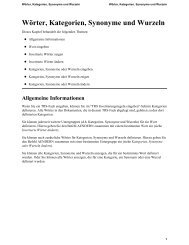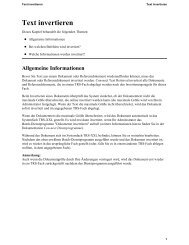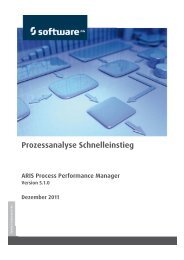Ending Entire System Server - Software AG Documentation
Ending Entire System Server - Software AG Documentation
Ending Entire System Server - Software AG Documentation
You also want an ePaper? Increase the reach of your titles
YUMPU automatically turns print PDFs into web optimized ePapers that Google loves.
ESYTRACE Diagnosis Program Termination in MONITOR-MODE<br />
When in MONITOR-MODE, ESYTRACE can only be terminated by means of the operator command<br />
QUIT. Issue the QUIT command as follows:<br />
Option<br />
BS2000/OSD<br />
z/OS<br />
z/VSE<br />
Explanation<br />
/INTR tsn,QUIT<br />
F stcname,QUIT<br />
MSG xx,DATA=QUIT<br />
Write-to-Spool for Natural<br />
(This feature is available under z/OS, z/VSE only.)<br />
■ Purpose<br />
■ Using the Write-to-Spool Feature<br />
■ Installation Considerations<br />
Purpose<br />
The Write-to-Spool feature enables Natural users to write reports to the system spool directly. It<br />
can be used in any Natural environment (Com-plete, TSO, CICS, IMS, Batch, etc.) and uses the<br />
<strong>Entire</strong> <strong>System</strong> <strong>Server</strong> view WRITE-SPOOL.<br />
Under z/OS, the SYSOUT is part of the <strong>Entire</strong> <strong>System</strong> <strong>Server</strong> job stream within the JES spool, and it<br />
may be processed by any software which expects output in JES Spool. (for example, <strong>Entire</strong> Output<br />
Management).<br />
The JES spool may be a JES2 or a JES3 spool.<br />
Under z/VSE, the SYSOUT is a separate entry in POWER queue.<br />
Using the Write-to-Spool Feature<br />
The Write-to-Spool feature is handled by a so called “access method”, which is called ESS for <strong>Entire</strong><br />
<strong>System</strong> <strong>Server</strong>. You may define your printer in NATPARM or dynamically in your session parameter<br />
as follows:<br />
1. Define NATPARM:<br />
In NATPARM, the NTPRINT macro has be set with printer number and access method definition as<br />
follows:<br />
Administration<br />
Common <strong>Entire</strong> <strong>System</strong> <strong>Server</strong> Features<br />
85



